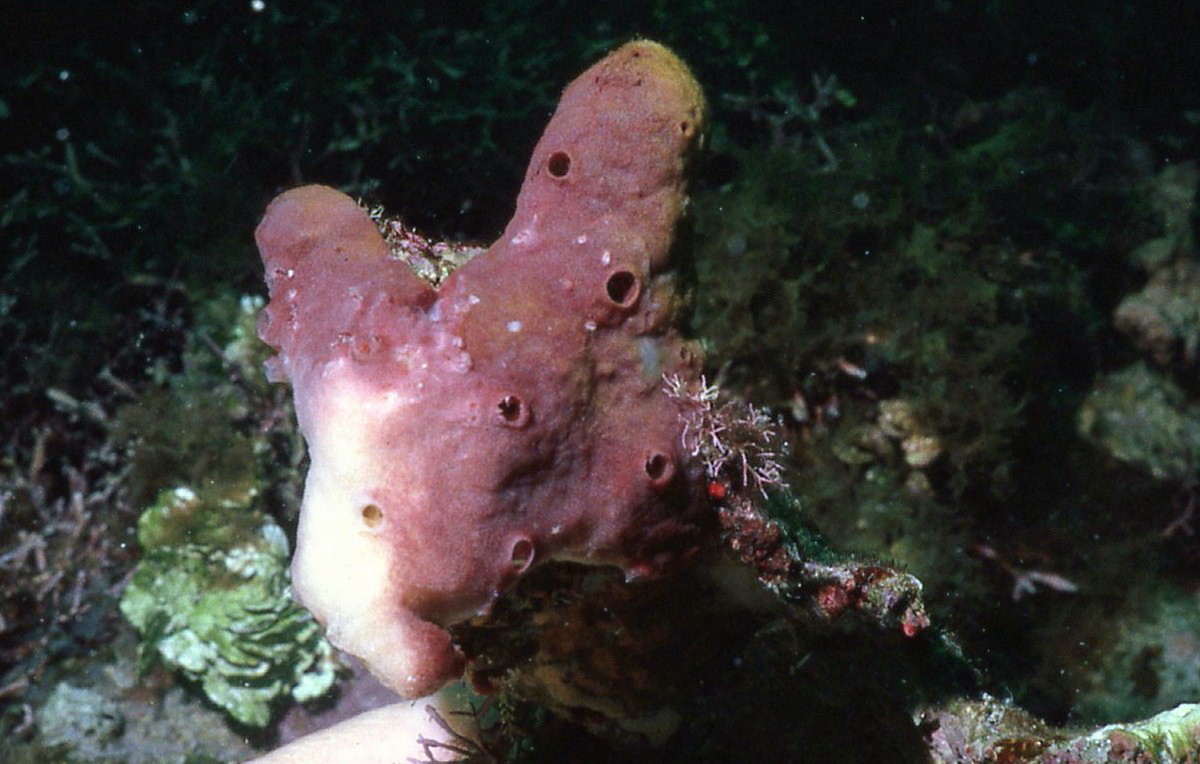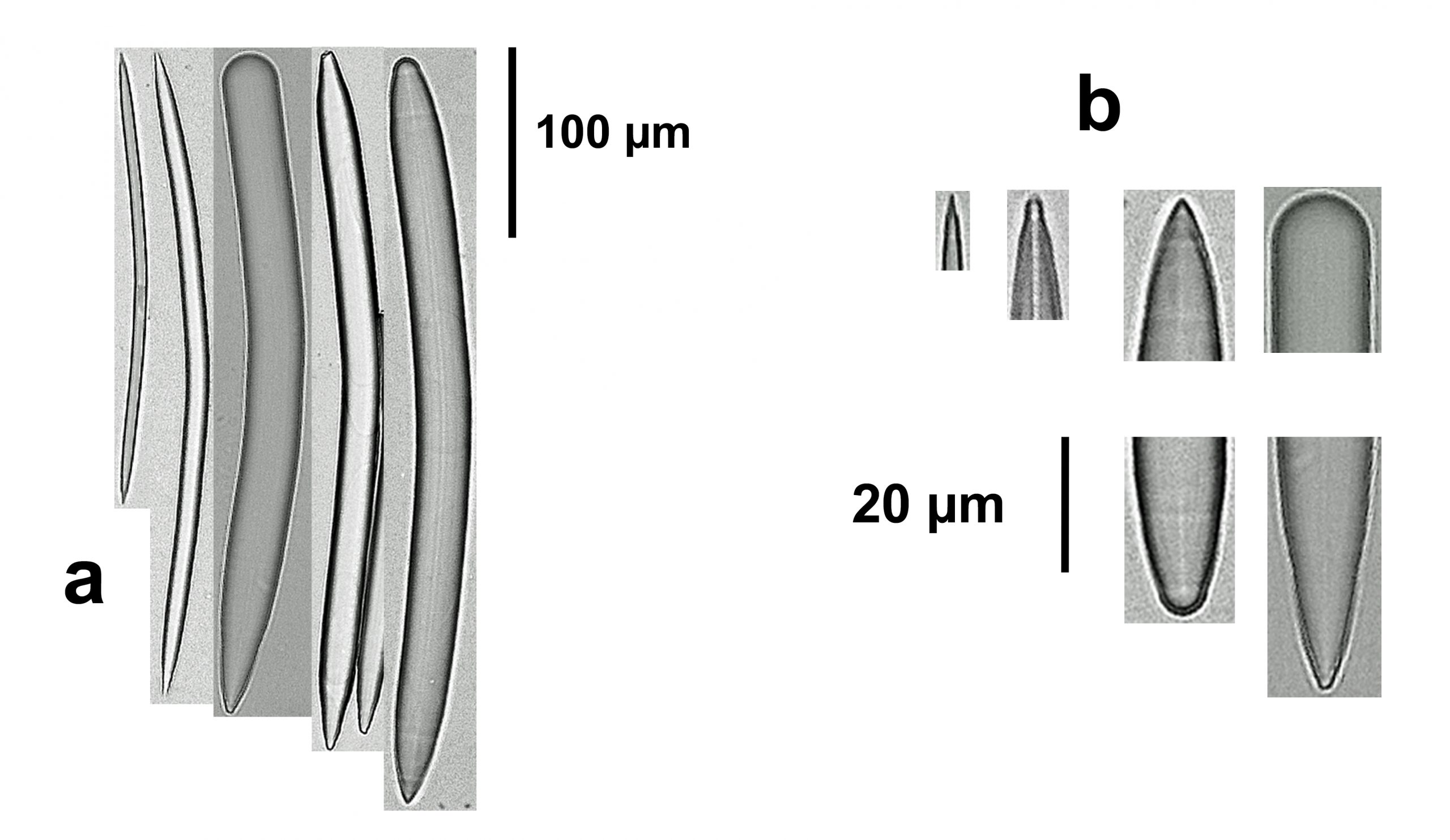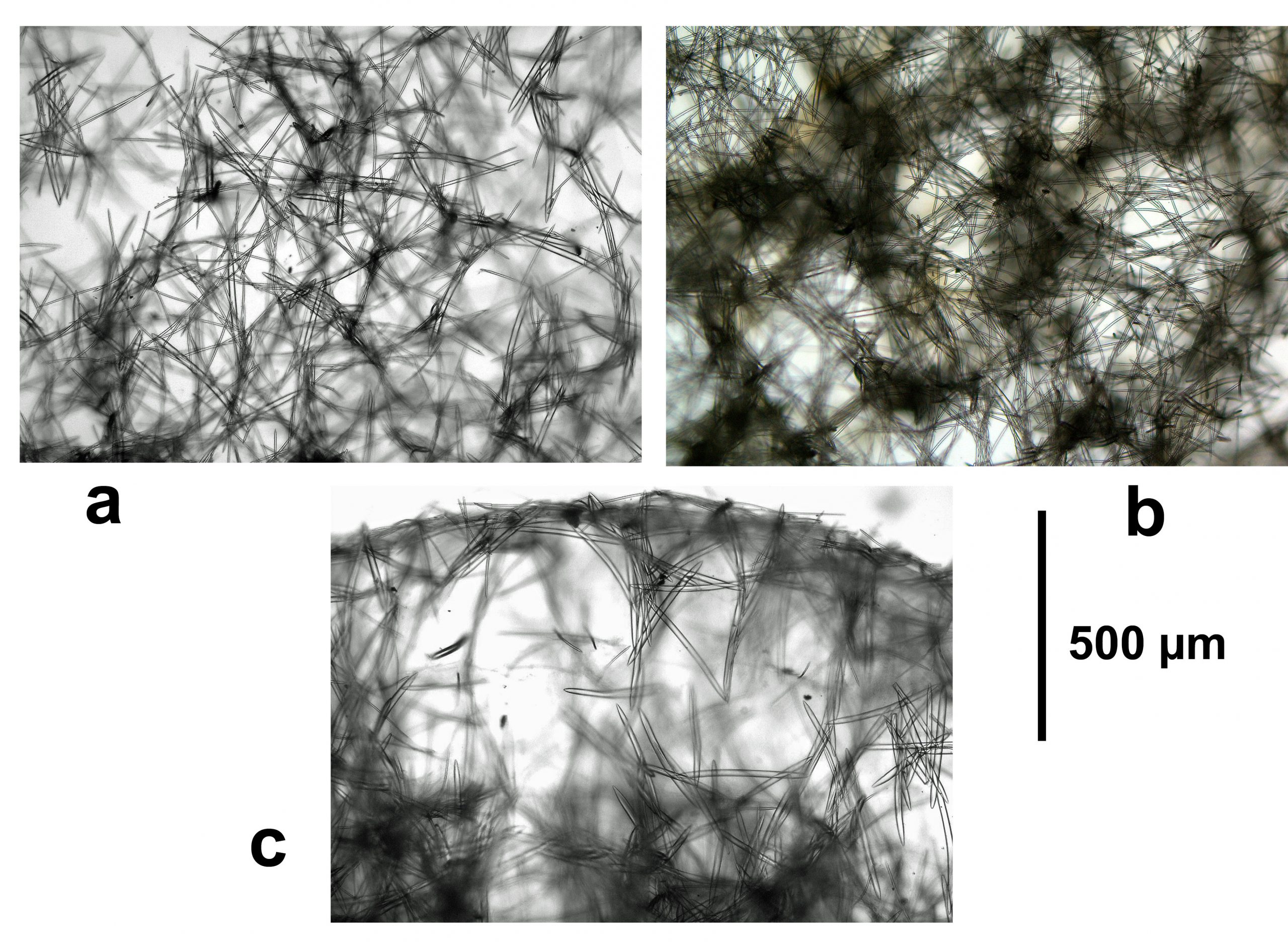Observed Characteristics:
Color:
- purple-violet
Morphology:
- massive
- branching
Consistency:
- hard
Sample Locations:
- Colombia-Islas del Rosario
Xestospongia purpurea

Description: Massive, with finger-like projections as primordial branches; size about 5 cm wide by 8-10 cm high. Surface even, micro rugose. Oscules relatively large, dispersed, 1-4 mm in diameter, with a slightly elevated edge. Color milky purple, with basal parts cream. Consistency hard, brittle. The ectosomal skeleton comprises an upper tangential reticulum of oxeas I (thinner, fusiform), somewhat confused, paucispicular (1–4 spicule tracts), forming meshes 60–150 μm in diameter, supported by a subsuperficial reticulum of thicker tracts of oxeas II (hastate, 3–7 spicules, 30–120 μm thick), with meshes 200–500 μm in diameter. The choanosomal skeleton is an isodictyal, rather confused reticulation, although ascending and interconnecting tracts can be discerned, 8–14 spicules and 240–260 μm thick, forming meshes of 300–700 μm in diameter, built by both types of oxeas. Near the sponge surface, growing layers are clearly distinct, but the skeleton becomes denser and confused as one goes deeper. The tracts have spongin cementing the spicules. Spicules are: oxeas in two size classes, (1) oxeas I, fusiform, slightly curved, with sharp points, 192-326 by 9.5-18.7 μm; (2) oxeas II, hastate, larger and thicker, with endings slightly blunt and sometimes mammiform or telescopic, or asymmetric turning into strongyloxeas and styles, 347-503 by 13-33.2 μm (description modified from Silva & Zea, 2017).
Notes: This is a shallow reef species. Upon collection, the specimen was confused with a branching Neopetrosia proxima (Duchassaing and Michelotti, 1864), also pictured here, but upon spicule examination it became clear, from the larger spicule size, that it was a species of Xestospongia. Once described, it was possible to assign the proper species name. The original material from Belize, found in cryptic habitats (1-18 m in depth), was encrusting to cushion shaped, with a knobbed surface and dispersed oscules, purple in color on top, with cream sides and base (Rützler et al., 2014). In addition to having the same two size classes of oxea, the studied specimen agrees with the Belizean original ones in color; its branch-like protuberances could be equivalent to the knobs of the Belizean specimens but with a greater growth. Interestingly, and to add to the variability of the species, in the studied specimen the first layer of the ectosome is built up exclusively of the thinner, smaller oxea, possibly as a new layer of growth. From its shape, color, and the two spicule size classes, this species is clearly distinct from the other Xestospongia species in the Caribbean.
Author Reference: Rützler, Piantoni, van Soest and Díaz, 2014
Link: World Porifera Database


